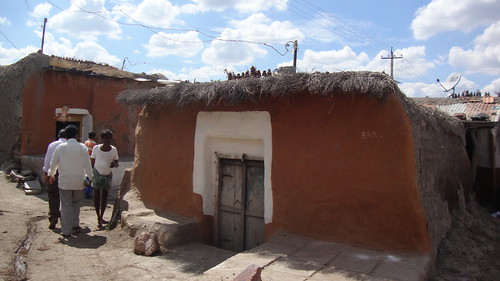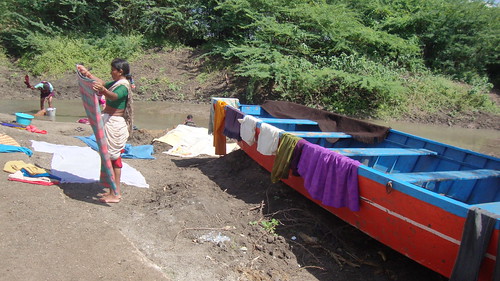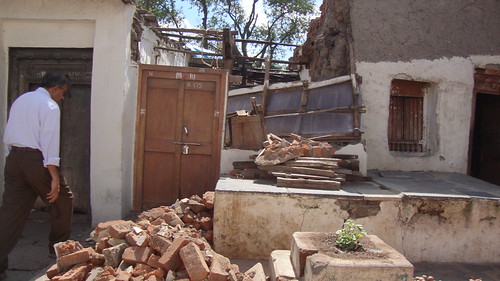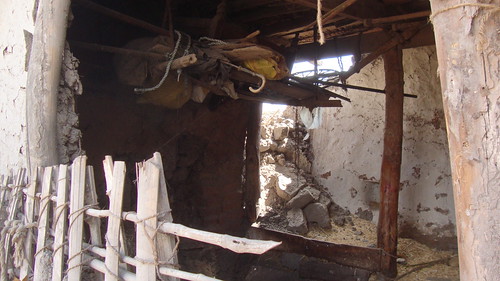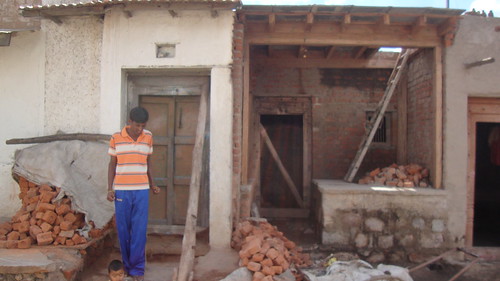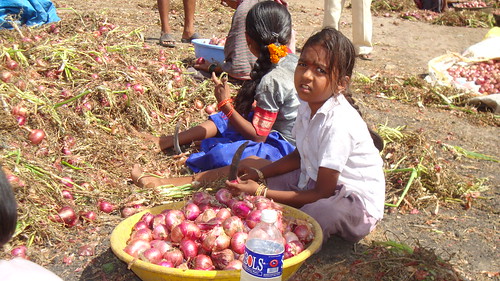On 15 November 2009, I set out to gather see how people were coping in the aftermath of the floods that hit parts of North Karnataka. We chose to visit Gudisagar in Navalgund Taluk in Dharwad district.
During the flood, this village was cut off for eight days, three of which the villagers spent standing in waist-deep water. Government relief agencies ferried food and other essentials using a boat. I saw the boat at the entrance to the village - though it was now put to other uses
Official statistics put the number of houses damaged at 225. However, this included all houses with any damage - from a crack in the wall to a completely collapsed house. The villagers put the number of completely collapsed houses at 91. Luckily, there were no injuries or deaths.
The villagers told me that all 225 people were to be rehabilitated and provided new homes. This was being done by the Kannada news channel TV9. 24 acres of land has been purchased and 225 new houses will be built. No construction has begin, because the farmers want to harvest the standing crop before handing the land over. I was also informed that two other similarly affected neighbouring villages were being rehibilated with help from the Sri Dharmasthala Manjunatha Swamy Temple
How were people coping? Quite remarkably, I thought. There were no homeless people, no makeshift shelters, no sign of widespread illness - no sign of a crisis. People with partially damaged houses went about patching up their houses as best as they could, while those with unusable or collapsed houses moved in with relatives. There were even signs of reconstruction activity.
The villagers suffered heavy losses, with most of their crop damaged in the rain. I saw heaps of damaged corn in the fields.
Gudisagar, is famous for its onions. Since the flood, the village has had a bumper crop.
People were remarkably cheerful and busy at work, preparing the onion crop for the market. The situation would seem almost normal were it not for the occasional damaged or collapsed house.
